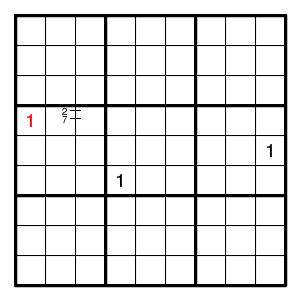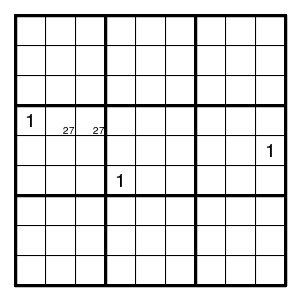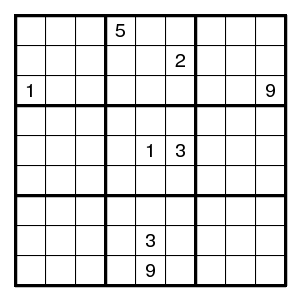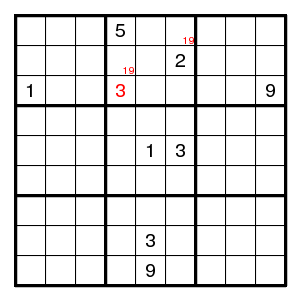

implies

Knowledge about what digits can occur in a given square can also be written down explicitly, as in

For example, in the situation

one concludes

Similar things apply in the situation where there are three (or four) digits that can only be on three (or four) positions in a given row, column, or box: these positions must contain these digits and nothing else. See the section on Matching. For an example where this argument (with three digits) is needed, see below.